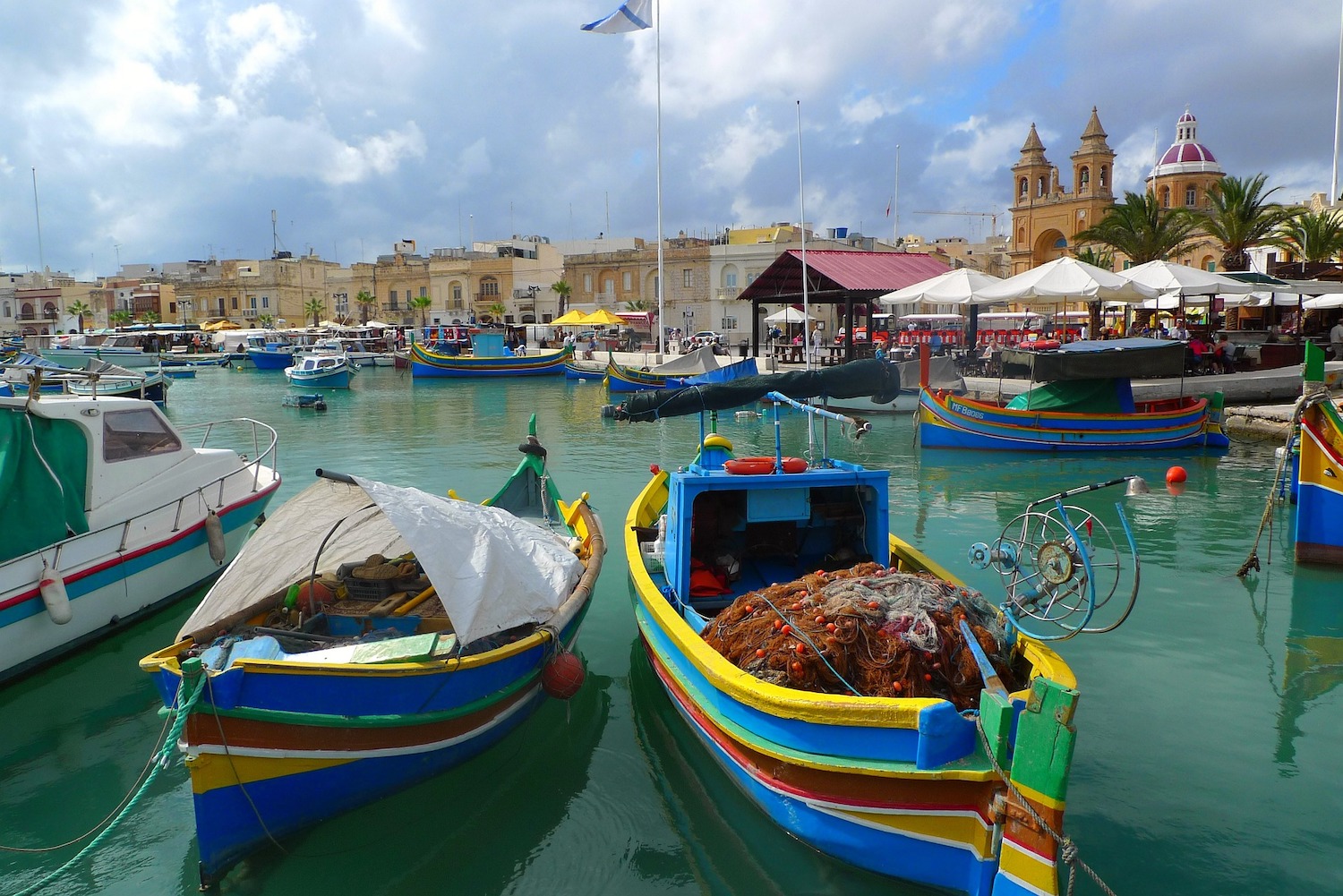On 12 March 1969, work was being carried out on the transept side of the Chapel of San Girgor (St Gregory) at Zejtun. Ruben Abela was just 16 years old at the time and was helping his uncle when he came across what seemed to be a circular entry in the chapel’s roof that had been blocked.
The curiosity of youth led him to loosen the stones around the blockage and lo and behold he uncovered a large quantity of skulls and bones whose presence and origin are still a mystery today.

Zejtun’s Chapel of St Gregory (photo by User:Reuv1 – Own work, CC BY-SA 3.0)
The Chapel of St Gregory
Located on the outskirts of the large village of Żejtun in the south of Malta, the small chapel is one of Malta’s oldest and is rich in cultural heritage.
Although dedicated to St Catherine of Alexandria, Żejtun’s first parish church is commonly known as St Gregory’s because of the annual pilgrimage to this place. Very little remains of the original rectangular church built before 1436, the time when Żejtun became a separate parish, apart from Mdina and Vittoriosa.
The discovery made by young Abela opened a whole new vista of secret passageways under its roof, one of which contained an array of bones and skulls belonging to children and adult males and females. Naturally, many questions arose, among them: why would a country chapel have an array of secret passageways, many of them under the roof? And what are these bones and skulls a consequence of what?

A pilgrimage is traditionally held on the first Wednesday after Easter Sunday, beginning in Zejtun (photo by Kikku33 – Own work, CC BY-SA 4.0)
Theories & Possibilities
In the 14th and 15th centuries, Malta suffered an almost continual series of Turkish invasions from Ottoman forces with many Christian persons captured and forced into slavery. With Turkish fleets mainly anchored in the south of Malta, one has to wonder if these secret passages were used by the local farmers and their families to remain concealed during these in invasions.
The last Turkish invasion took place in 1614 and when the bones were found, the theory proliferated that these were the final victims of that invasion.
In 1979, a study was carried out by medical professionals from Malta University, which established that quantities of soil were found in the bone joints and that these may have been buried somewhere else, exhumed from graves, and moved here later—a factor that gives rise to more questions and considerations.
Why, for example, had the task been undertaken to transport the bones to the church roof and be buried in its passageways and why were the bones not piled together but strewn about?
It is noticeable that the secret passages contain openings that look on the towers of San Luċjan and San Tumas, which signifies that a watch may have been kept to detect signals from these towers of an impending invasion.
Curiously, dates and initials are also etched into the stone of the church passageway. The date etched is 1909 and the initials are of two persons on the same day. It is probable that two persons entered the passage but did not tell anybody because Malta had just experienced a plague and the bones may have been plague-infested and they could have been infected by contact.

The colourful village of Marsaxlokk (photo from Pixabay)
The Feast of St. Gregory (San Girgor)
The chapel reaches its peak at Easter time. Annually, on the first Wednesday after Easter Sunday, a great folk festival dating back 500 years is held in the area, extending down to the fishing village at Marsaxlokk.
A solemn morning procession from the chapel starts the day and is followed by activities that include popular folk singing, food, and handicraft displays of loom weaving, filigree, earthenware, glass and lace. Children play traditional games, mostly hop-skip-and jump. For adults, continuous games of tombola are the order of the day.
However, the main event on this day is watching people strip down to their swim costumes and plunging into Marsaxlokk Bay and St Peter’s Pool to kick of the start of the swimming season in Malta. Do they do this every year, no matter the weather, for the sake of tradition? Yes, they do!
Marsaxlokk is a picturesque fishing village where the vibrant hues of traditional fishing boats dance in the sea. Be sure to check out the lively Marsaxlokk Fish Market every Sunday. Stalls also sell souvenirs and locally made products such as jam, honey, vegetables and wine.

Try local specialties like these boat-shaped biscuits at Sunday’s Marsaxlokk Fish Market (photo by Benreis – Own work, CC BY-SA 4.0)
***
Be Seeing You In: Malta
Good to know: The church is generally not open except for a handful of days a year, on special local holidays
WOW! Factor: The mystery of the found skulls and bones remains after all these years
Tip: It’s about a 20-minute drive/ taxi ride from Valletta to Marsaxlokk
***
Author Bio: Albert Fenech
e:mail – salina46af@gmail.com
Find your travel muse at BeSeeingYou
Follow us on Instagram









